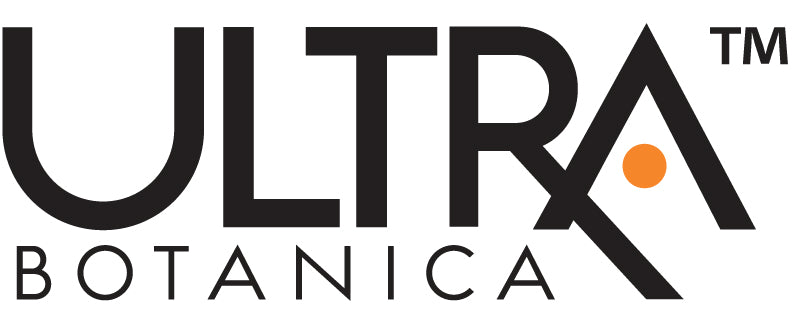Let's face it, getting an appointment with a doctor can sometimes feel like winning the lottery. There's a real doctor shortage happening in America. Wait times are longer, some folks can't find a primary care physician, and specialists seem as rare as unicorns.
What’s behind this healthcare hurdle, and what can you do to survive and thrive despite this doctor shortage?
You're not alone if you've felt frustrated waiting weeks for an appointment only to sit in a packed waiting room for even longer. The reasons for this crisis are complicated but understanding them is the first step toward navigating this challenging landscape.
The Scope of the Problem
The average wait time to see a doctor has risen to 26 days -- an 8% increase since 2017 and a 24% spike since 2004, according to a 2022 survey conducted by AMN Healthcare.
Specialties that are particularly hard-hit include primary care physicians, family medicine, and emergency medicine. The CDC reports that nearly 140 million Americans visited hospital emergency rooms (ERs) in 2021.
Thousands of those ER patients waited hours to see health care providers, and many patients left in frustration before being seen by doctors.
In fact, one study analyzed emergency room care in 1,000 hospitals between 2017 and the end of 2021 and found that the worst ones had 4.4% of their patients leave the ER before a medical evaluation was conducted. By the end of 2021, that number had risen to 10%.
To add fuel to the fire, many specialists require you to be referred by a primary care physician (PCP) to get health care access with the specialist. But if you can't get in to see a primary care physician in the first place, you're stuck between a rock and a hard place.

The Underlying Reasons for the Physician Shortage
Several factors contribute to the current and projected physician shortage, creating a perfect storm in our healthcare system. Let's break down these major contributors.
An Aging Population Needing More Care
First, let’s consider the demographic shifts in America. As Baby Boomers age, they require more medical attention. People over 65 often see specialists more than younger people, which stretches those specialties thin.
The Retirement Tsunami of Experienced Physicians
Simultaneously, as a large wave of doctors reach retirement age they leave behind gaps. By 2034, more than 40% of actively practicing physicians will be over 65.
As experienced physicians step back, newer doctors aren't filling those gaps fast enough. That exodus of expertise further strains an already-burdened system.
The loss of these experienced doctors creates a significant knowledge gap that's difficult to fill quickly.
A Bottleneck in Residency Programs Limiting New Doctors
Adding to this issue, graduating from medical schools doesn't mean you’re automatically a practicing physician.
These newly minted doctors need medical residency positions for specialty training, and unfortunately, those residency spots are limited.
The number of federally funded resident physician slots hasn't kept pace with medical school growth, essentially creating a traffic jam on the road to becoming a fully qualified doctor.
While Congress did increase Medicare-supported Graduate Medical Education (GME) slots (which fund residencies), the increase of 1,000 additional slots over three years isn’t nearly enough to resolve the shortage.
According to a 2022 advisory from the U.S. Surgeon General, we "need many more" GME slots to address both the workforce shortages and issues like physician burnout.
This is a big hurdle in getting new doctors into the physician workforce where they are desperately needed.

Medical School Debt Pushing Grads Toward High-Paying Specialties
There's also a financial angle to the doctor shortage: medical school is expensive. Most new doctors graduate medical school with an average of $250,000 in medical student loan debt.
This makes it challenging for them to choose lower-paying specialties, such as primary care, further exacerbating the primary care physician shortage.
Medical students often feel compelled to pursue lucrative specializations, leading to increasing numbers of certain types of doctors and a serious lack of general practitioners.
It's perhaps no surprise then that in 2023, family medicine saw a shocking 217 unfilled residency spots —the highest of any health care specialization.
Beyond The Numbers: The Real-Life Impact
These numbers paint a bleak picture. The physician shortfall has real, tangible consequences for people like you and me. Longer wait times mean potential health problems can worsen while waiting for treatment.
Patients frustrated by endless phone calls and scheduling headaches might even skip necessary appointments. The consequences of delayed health care can be severe, especially for chronic conditions.
Let's look at what's happening in rural areas for example.
The Rise of “Medical Deserts”
About 20% of Americans reside in rural areas, but less than 11% of doctors serve those communities. That uneven distribution has created "medical deserts"—places with limited access to even basic health care.
People who live in these areas are often older and in greater need of health care, further highlighting the disconnect between the need for health care and the lack of access.
Imagine needing specialized care and having to travel hundreds of miles for a single appointment. This can become a monumental task.
Sadly, the lack of local health care providers is driving up these health care disparities, placing an enormous strain on rural communities already grappling with financial and infrastructure challenges.

More Than Just Numbers: Physicians Feeling the Pressure
The burden of the doctor shortage falls heavily on doctors themselves. They often grapple with crushing workloads, increased paperwork, and administrative headaches — a recipe for burnout.
A study by the American Medical Association, the Mayo Clinic, and Stanford Medicine revealed that 2 out of every 3 doctors experienced burnout during the pandemic. It found that 1 in 5 doctors even said they plan to leave medicine within the next two years.
You can't blame them—they are human after all, not robots. This exhaustion often leads to decreased quality of care, further adding to a cycle of decline in an already strained health care system.
Corporate Influence and Insurance Woes: Adding to the Strain
On top of these challenges, the business side of health care adds another huge bureaucratic layer to the problem.
The growing influence of large medical corporations and insurance companies in medical care is threatening to overwhelm the doctors' diagnosis and treatment plans. In 2020, for the first time, less than half of physicians in the US are working in private practice.
Corporate practices tend to be in well-populated, financially secure regions, further reducing accessibility in underserved areas.
Insurance companies can make seeing a doctor incredibly frustrating and confusing. The complicated approval processes and restrictions add further strain to both doctors and their patients.
Doctors are pushing back, saying that they didn't go to medical school in anticipation of arguing with insurance companies. They consider it insulting and demeaning.
And as a patient, don't you want to be getting direction from your doctor instead of your insurance company? It adds an unnecessary layer of difficulty when a doctor recommends a specific test or treatment, only for you to be denied by your insurance.
Doctor Burnout and a Search for Work-Life Balance
All of these issues, in addition to having to manage a high debt load, can easily lead to burnout and depression. Burnout rates have fallen back to an average of under 50% and job satisfaction has risen in the past year or two.
The worst burnout rates are for those in practice from 10 to 15 years, when a doctor's expertise and reputation are well-established and he or she is at their busiest.
Meanwhile, younger doctors like many others in their generation, are seeking greater work-life balance, and many are unwilling to work the same long hours of those who are closest to retirement.
Fortunately, many of the medical corporations have been taking proactive steps to remediate burnout and support their physicians to stay in practice.
Surviving the Doctor Shortage: Practical Steps for You
The doctor shortage is a huge problem and fixing it will take a concerted effort on multiple fronts. So, what can you do to manage your own health within this complicated landscape?

Prioritize Prevention and Take Charge of Your Health
Prevention is key! Adopting healthy lifestyle choices through diet and exercise can reduce your risk of developing chronic conditions.
This means you’ll need fewer trips to the doctor in the first place. Eating well and moving your body regularly can do wonders. Muscle strength will keep frailty at bay. Simple habits such as managing stress levels and getting enough sleep also play a crucial role.
A recent study found that people who maintained good blood sugar levels and controlled their blood pressure significantly reduced their risk for cardiovascular issues—one of the most common health problems today.
So, to keep yourself out of doctors' offices, you'll need to focus on doing what you can do for yourself. 😊
In addition to diet, exercise, sleep, and stress management, consider a regimen of nutritional supplements that support your health, from general health to eyes, brain, joints, and more, to proactively support your health.
Advocate for Yourself and Ask Questions
When you're at a doctor appointment, ask questions and be your own health advocate. Bring a list of your concerns/questions and any medications you are taking to the appointment, to maximize your time with the physician.
Doctors are busy, and staying organized can ensure you cover all the important stuff. This will help you feel more empowered and involved in your own healthcare journey.
Explore Alternative Healthcare Practitioners
Nurse practitioners, physician assistants, and clinical nutritionists are trained healthcare providers that can provide routine checkups and even manage some chronic conditions.
Whether they're part of a practice or independent, consider them an alternative to a physician if you're facing a long wait time for an appointment. Virtual healthcare through tele-health platforms has grown dramatically, providing access to medical advice from the comfort of your home.
These options might not replace a traditional doctor entirely but offer convenient access to medical guidance when needed. And offers more continuous care than an emergency room.
Planning for the Future
Is your primary care doctor nearing retirement? Don’t wait until they’ve packed their bags... plan ahead and start looking for a replacement sooner rather than later.
Establishing care with a new provider takes time and it's always easier to get that done before you need immediate care. If your insurance has a referral system, be aware of its procedures, and initiate the process early.
Conclusion
The doctor shortage is a major hurdle for many Americans, impacting both access to care and overall health outcomes. While this complex problem won't be solved overnight, it requires a multifaceted approach.
We need to understand what's contributing to this issue: an aging population, the doctor retirement wave, the bottleneck in residency training, physician burnout, corporate influence, and a confusing insurance system.
All these factors work together, creating a perfect storm within our healthcare system.
To effectively navigate the doctor shortage, consider adopting healthy lifestyle habits, advocating for yourself when seeing a physician, exploring alternative care options, starting or enhancing a supplement regimen, and proactively planning for upcoming healthcare needs.

FAQs About the Doctor Shortage
What is causing the doctor shortage?
Multiple factors cause the doctor shortage in the US, including an aging population, the retirement of experienced doctors, physician burnout, and a limited number of residency spots.
Medical school debt is a significant burden, leading many medical students toward higher-paying specialties rather than primary care .
Additionally, issues with the healthcare and insurance systems contribute to the problem, making it harder for doctors to provide efficient and effective care.
Why are so many doctors quitting?
Many factors, such as overwhelming workloads, high levels of administrative work, fighting with insurance companies, and insufficient compensation, can contribute to doctor burnout.
These pressures take a toll on physician well-being and can make them leave the medical profession entirely.
How many doctors are we short in the US?
The Association of American Medical Colleges projects a doctor shortage between 37,800 and 124,000 physicians by 2034. This shortage is expected to impact various specialties and geographic locations across the country.
Why are there not a lot of doctors?
Several factors contribute to this doctor shortage. This includes challenges accessing and funding quality medical school training.
There's also the issue of demanding work conditions and burnout, younger doctors being unwilling to work the long hours their older colleagues work, and an aging population.
Then, many doctors choose specialized fields over general practice due to earning potential and perceived prestige.
These factors, combined with the rising healthcare demands, create a significant gap between the need for doctors and the available workforce.





Share:
What are Neurotransmitters and How Do They Impact Health?
Essential Fall Gardening Tips for a Lush Autumn Harvest